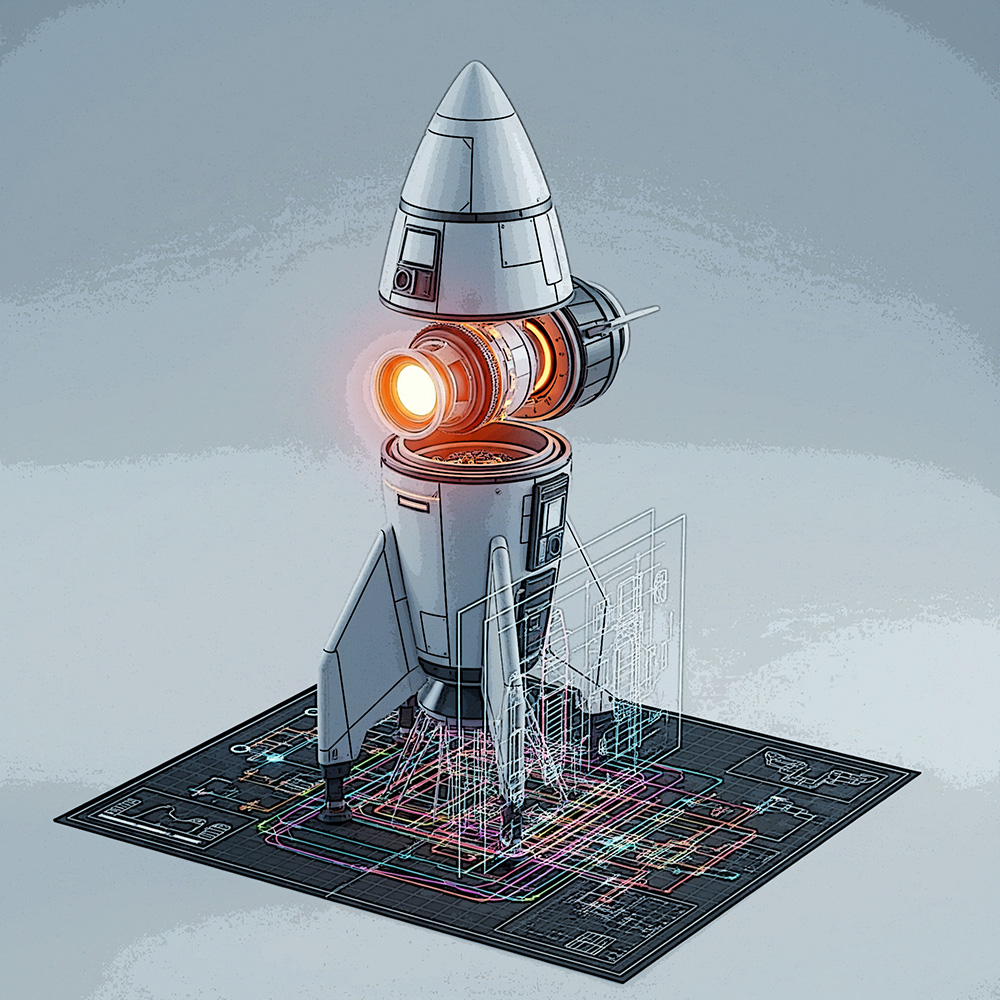MVP Design & Development
Launch new products and features with confidence.
We partner with businesses of all sizes to design and build a Minimum Viable Product (MVP) to validate ideas, mitigate risk, and ensure you build what your customers truly need.

The Smartest Way to Launch a New Digital Product
Launching a new product, feature, or internal tool always carries risk. The biggest danger is investing a significant budget into a large-scale project based on assumptions, only to find it doesn't meet user needs. An MVP is a strategic tool to manage this risk. It's the most efficient way to test a concept with real users and gather the data needed to make informed decisions before committing to a full-scale build.
Our MVP Design & Development Process
Our process is designed to move from concept to a working, value-delivering product with speed and strategic focus.
1. Strategic Discovery
We work with your stakeholders to define the core business problem, identify key user personas, and map out the critical path to a solution.
2. Prototyping & Validation
We build an interactive prototype that allows you to test the user experience and validate the concept with real users before development starts.
3. Core Feature Development
Using an agile approach, we build the essential "must-have" features defined in the discovery phase, creating a lean but complete product.
4. Launch, Measure & Evolve
We deploy the MVP and help you gather quantitative data and qualitative feedback. This learning informs a data-driven roadmap for future iterations.
Why MVPs Fail (And How We Prevent It)
Many MVPs fail not because the idea is bad, but because they're executed poorly. Understanding common pitfalls helps ensure your MVP delivers genuine value and actionable insights.
Too Many Features
Feature creep defeats the purpose of an MVP. We help you ruthlessly prioritise to focus only on core functionality that validates your hypothesis.
Poor User Experience
"Minimum" doesn't mean "bad". We ensure your MVP provides a polished experience that users will actually want to engage with.
No Measurement Strategy
An MVP without analytics is just a small product. We build in comprehensive tracking to capture the data that drives decisions.
Wrong Target Audience
Testing with the wrong users gives misleading feedback. We help identify and engage your actual early adopters.

The Business Case for an MVP
-
Mitigate Financial Risk
Test your idea with a smaller upfront investment, ensuring there is real market demand before committing a larger budget.
-
Accelerate Time-to-Market
Launch a working product and start generating value and feedback in a fraction of the time it takes for a full-scale build.
-
Build User-Centric Products
Use real user data, not assumptions, to guide your product roadmap and build features your customers will actually use and love.
-
Secure Stakeholder & Investor Buy-In
A functional MVP with early traction is the most effective tool for demonstrating a new product's potential to internal stakeholders or external investors.
Frequently Asked Questions
An MVP (Minimum Viable Product) is a fully functional version of your product with just enough features to solve the core problem and validate your business hypothesis. You need one because it reduces the risk of building the wrong thing. Instead of a major investment on a full product that might fail, you make a smaller initial investment to test your assumptions with real users. This approach has saved our clients significant costs by identifying what customers actually want before major investment.
Most MVPs take 8-12 weeks from kickoff to launch. This includes 2 weeks for discovery and planning, 1-2 weeks for design and prototyping, 4-6 weeks for development, and 1-2 weeks for testing and deployment. Complex MVPs with multiple integrations might take up to 16 weeks. The key is maintaining focus on core features only. We've seen projects fail when they try to build too much - a good MVP should feel slightly uncomfortable in how minimal it is.
Post-launch is where the real learning begins. We help you gather and analyse user data, conduct user interviews, and measure key metrics like user engagement, retention, and conversion. Based on this data, you'll make one of three decisions: pivot (change direction based on learnings), persevere (continue building out the product), or perish (stop if there's no market fit). Most successful products go through 2-3 iterations post-MVP before finding product-market fit. We support this entire journey with ongoing development sprints.
We use a rigorous prioritisation framework during discovery. First, we identify your riskiest assumption - the thing that, if wrong, would cause the product to fail. Then we determine the minimum features needed to test that assumption. We use techniques like user story mapping, the MoSCoW method (Must have, Should have, Could have, Won't have), and impact vs effort matrices. Every feature must directly contribute to validating your core hypothesis or it gets cut. This discipline is what separates a true MVP from just a small product.
Absolutely! MVPs work brilliantly for internal tools and process improvements. Instead of building a comprehensive system that tries to solve everything, we start with the most painful bottleneck. For example, a logistics client needed a complete warehouse management system but started with an MVP focusing just on goods-in processing - their biggest pain point. This delivered immediate value while we learned what other features were truly needed. Internal MVPs often have even better ROI because you can measure productivity improvements directly.
Ready to Validate Your Next Big Idea?
Let's discuss how an MVP can provide the fastest, most effective path from concept to a successful, market-ready product.